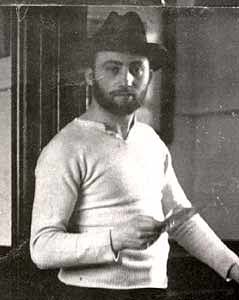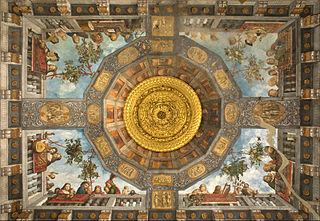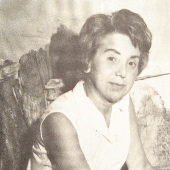
David Garshen Bomberg was a British painter, and one of the Whitechapel Boys.

Trompe-l'œil is an artistic term for the highly realistic optical illusion of three-dimensional space and objects on a two-dimensional surface. Trompe l'œil, which is most often associated with painting, tricks the viewer into perceiving painted objects or spaces as real. Forced perspective is a related illusion in architecture.

Morris Louis Bernstein, known professionally as Morris Louis, was an American painter. During the 1950s he became one of the earliest exponents of Color Field painting. While living in Washington, D.C., Louis, along with Kenneth Noland and other Washington painters, formed an art movement that is known today as the Washington Color School.
Metarealism is a direction in Russian poetry and art that was born in the 1970s to the 1980s and includes such poets as Konstantin Kedrov, Viktor Krivulin, Elena Shvarts, Aleksandr Yeryomenko, Svetlana Kekova, Yuri Arabov, Alexei Parshchikov, Sergei Nadeem. Nikolai Kononov, among others. The term was first used by Mikhail Epshtein, who coined it in 1981 and made it public in the Soviet magazine "Voprosy Literatury" in 1983

Lucio Fontana was an Argentine-Italian painter, sculptor and theorist. He is known as the founder of Spatialism and exponent of abstract painting as the first known artist to slash his canvases - which symbolizes an utter rejection of all prerequisites of art.

José María Cano Andrés is a Spanish visual artist, musician, composer, and record producer. From 1982 to 1998, he was a member and principal composer of the Spanish pop-rock band Mecano. Since 1998, he works primarily in the visual arts.
Tolleck Winner is a United Kingdom-based sculptor. Born 30 July 1959 in the former Soviet Union, he has lived and worked in the United Kingdom since 1980.

Jane Schenthal Frank was an American multidisciplinary artist, known as a painter, sculptor, mixed media artist, illustrator, and textile artist. Her landscape-like, mixed-media abstract paintings are included in public collections, including those of the Corcoran Gallery of Art, the Baltimore Museum of Art, and the Smithsonian American Art Museum. She studied with artists, Hans Hofmann and Norman Carlberg.

Anne Redpath (1895–1965) was a Scottish artist whose vivid domestic still lifes are among her best-known works.

Chris Gollon was a British artist.

John Granville Colpoys Keane is a British artist, whose paintings have contemporary political and social themes.

Cubist sculpture developed in parallel with Cubist painting, beginning in Paris around 1909 with its proto-Cubist phase, and evolving through the early 1920s. Just as Cubist painting, Cubist sculpture is rooted in Paul Cézanne's reduction of painted objects into component planes and geometric solids; cubes, spheres, cylinders, and cones. Presenting fragments and facets of objects that could be visually interpreted in different ways had the effect of 'revealing the structure' of the object. Cubist sculpture essentially is the dynamic rendering of three-dimensional objects in the language of non-Euclidean geometry by shifting viewpoints of volume or mass in terms of spherical, flat and hyperbolic surfaces.
David Breuer-Weil is an artist from London whose work is exhibited worldwide. He works in different media including large canvases and monumental bronze sculptures.
Robert Marc (1943–1993) was a French post-Cubist artist born in Auxerre.

Michael James Kidner was a British op artist. Active from mid-1960s, Kidner was an early exponent of the genre. Through his interest in mathematics, he was part of the Constructivism movement and chaos and wave theories influence his work.
Eric Butcher is a contemporary British abstract painter known for his reductive, processed-based approach.

Mary Potter, OBE was an English painter whose best-known work uses a restrained palette of subtle colours.

The Palace of Memories is a painting in oil on canvas, 46.2 × 38.2 cm, created in 1939 by Belgian surrealist artist René Magritte. It is held in a private collection.

Evan Charlton (1904–1984) was a British artist who painted surrealist landscapes and interiors.

The House series was produced by Roy Lichtenstein in the late 1990s and consists of several large-scale outdoor sculptures and an interior wall piece. The House series includes three distinct works: House I, House II, and House III. Each piece depicts the exterior of a simplified cartoon house, while actively producing an optical illusion. Houses I and III are available for display at the National Gallery of Art Sculpture Garden in Washington, D.C., and the High Museum of Art in Atlanta, GA, respectively. No records indicate the current location of House II.

















